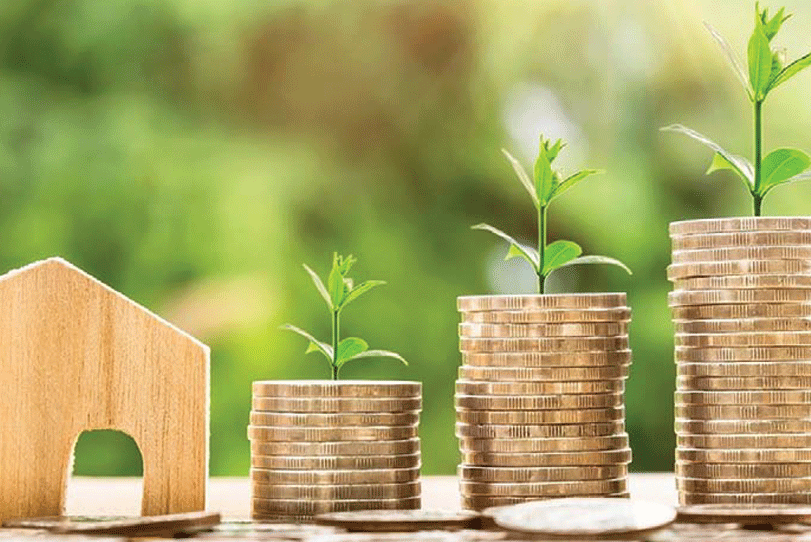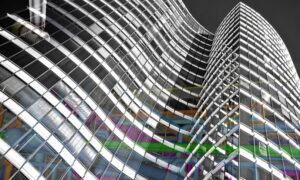On contrary to the perception that green costs more, it would be interesting to note that many green building requirements are rather save costs, elucidates Ashish K Jain, Partner, AEON Integrated Building Design Consultants LLP.
Buildings are a big part of sustainability challenge, and thus a huge opportunity. The World Green Building Council counts buildings as fundamental to 9 of the 17 UN Sustainable Development Goals.
“The construction and operations of buildings account for 40 percent of global energy use, 30 percent of energy-related GHG emissions, approximately 12 percent of water use, nearly 40 percent of waste, and employs 10 percent of the workforce” – UN Environment Programmefrom Sustainable Buildings and Construction.
This implies that if we want a more sustainable society and economy, we need to create green buildings. Moreover, we spend 90 percent of our time indoors. Because buildings consume so many resources, and we spend so much time in them, they represent an outsized opportunity. As per World Green Building Council, Green buildings represent a major global investment opportunity, with buildings making up the largest segment of the US$ 231 billion energy efficiency market.
Defining Green Buildings
There is no single definition of a green building, though some organisations have their own definition. For example, the International Finance Corporation (IFC), which is focused on supporting the private sector in emerging markets, defines a green building as one that saves 20 percent of embodied energy (the total energy required) and water in its construction and operations.There is an increasing trend to go beyond environmental aspects in defining a green building to incorporate other environmental, social and governance (ESG) criteria, such as wellbeing.
There are several projects where better outcomes for people, planet, and profits are simultaneously achievable. Building owners can profit from energy efficiency measures, retrofits and improvements. Reducing energy use reduces utility bills. Better, healthier buildings typically command higher rents and are worth more.
Thereby, it will not be incorrect to define it as “Green Buildings are the ones that achieve Triple Bottom Line – People, Planet & Profit”.
Rental values and vacancy in non-green buildings vs. Green Certified Buildings
As per paper published by JLL India, occupiers are willing to pay a premium rent in an effort to reduce overall operation, maintenance and costs as this has far more benefits than paying lesser rent while incurring an overall higher expenditure. This proves to be a win-win situation for both developers and occupiers.
Do green buildings cost more?
There has been a widespread perception in the real-estate industry that building green is significantly more expensive than conventional methods of development. However, determining a precise “incremental cost for green” for agiven project is often very difficult for several reasons viz.
- Some green buildings being built today are showcase projects that may include additional and sometimes costliermaterials and finishes that are unrelated to greenness but that nonetheless are counted as incremental cost for building green.
- Design and construction process for the first green building of a building owner, developer or design firm is often characterised by significant learning curve costs, and design schedule problems such as late and costly change orders.
- The relative newness of green technologies and systems can make designers, architects and clients conservative when using them. They may oversize building systems and not fully integrate them into the building, thereby reducing cost savings and other benefits.
- Similarly, cost estimators may add uncertainty factors for new green technologies that they are not familiar with, and these can compound, further inflating cost estimates.
- Moreover, adding green concepts as add-ons to an already completed design leads to redesign and thereby, change the project economics pertaining to green buildings.
A detailed research report prepared by Davis Langdon cites that “there is no significant difference in average costs for green buildings as compared to non-green buildings. Many project teams are building green buildings with little or no added cost, and with budgets well within the cost range of non-green buildings with similar programs.”
Commons in Regulatory Norms & Green Buildings
It is worthy to note that by complying with the requirements of Ministry of Environment and Forests (MoEF) and Energy Conservation Building Code of India, many green building requirements are automatically met in the projects including but not limited to the following:
- Incorporate rainwater rain water harvesting
- Installation of sewage treatment plant
- Installation of solar hot water systems
- Efficient building envelope
- Efficient electro-mechanical systems.
Cost saving strategies
On contrary to the perception that green costs more, it would be interesting to note that many green building requirements are rather save costs, for instance
- Reusing construction waste generated at site leads to reducing cost of purchasing fresh materials for site management
- Usage of locally available materials allows reducing transportation costsfor material procurement
- Usage of salvaged materials enabling project to procure cheaper materials
- Top soil preservation and its reuse leads to saving cost in buying soil for landscaping
- Implementing construction indoor air quality management strategies leads to scheduled interior construction activities and avoids damage of costlier furnishings materials
- Selecting a site that’s closer or in the middle of previously developed urban areas. The advantage lies in terms of less site clearing activities and removing less vegetation. Additionally, the site is likely to be closer to public transportation and basic amenities, which is also a requirement of green buildings.
Low or No cost strategies
Many green building requirements have minimal or no cost implications such as,
- Adequate sizing of parking spaces
- Providing preferred parking spaces for electric vehicles, carpools and differently abled people
- Using reflective paints/materials on roof to reflect heat and reduce surface temperatures
- Using low VOC paints for interior spaces to maintain healthy indoor environment
- Providing energy and water meters for different end-uses
- Using energy star rated appliances
- Installing low flow water fixtures
- Using native/adaptive species for landscape
- Using pervious pavers for pathways and parking lots
- Using CFC free refrigerant in air-conditioning systems.
Incorporating above mentioned strategies form a considerable part of overall requirements of specified under different green building rating systems. Combining these strategies with conscious passive architectural design strategies viz. optimum building orientation, form and shapes of the buildings enable the projects to not only attain green building certifications but also achieve reasonable operational savings at almost no or negligible cost premium.
Incremental Cost & Paybacks
Additional measures including the installation of onsite renewable energy generation like solar photovoltaic; incorporation of advanced technologies in the design of building’s mechanical, electrical and plumbing systems; installation of sensing devices for light, carbon dioxide, carbon monoxide, occupancy etc.though add to the project’s incremental costs however provide operational savings in terms of reduced utility bills and maintenance costs and thereby additional cost spent in implementing those can be recovered within a reasonable period.
Incorporation of these measures also enables the projects achieving higher levels of Green Building ratings which, as a subtle advantage, provide a higher brand image for corporates, owners and other stakeholders.
Incentives for Green Buildings
Considering the economic, social and environmental benefits associated with the green buildings, local regulatory bodies have also started providing supplementary benefits for constructing green buildings. Local authorities of several states like Punjab, Kolkata, UP, Haryana, Rajasthan are now offering 5-15 percent extra buildable FAR to the developers if they construct a building to achieve minimum Gold or equivalent rating. Apart from this, faster clearances and lower development charges, rebate in submission fees are few more incentives available for projects that are aiming Green Building Ratings.
With these incentives, green building movement has been considerably accelerated and the question of incremental cost is being faded due to the simple fact of having increased saleable area and other benefits. In fact, developers are now expecting increased revenues by constructing green buildings.
In addition, a number of other studies document measurable benefits for enhanced day lighting, natural ventilation, and improved indoor air quality in buildings. Benefits associated with these “green” features include enhanced worker and student productivity, as well as reduced absenteeism and illness. A study at Herman-Miller showed up to a 7 percent increase in worker productivity following a move to a green, daylit facility.
We continue to see project teams conceiving of sustainable design as a separate feature. This leads to the notion that green design is something that gets added to a project – therefore they must add cost. This tendency is especially true for less experienced teams that are confronting higher levels of certifications (Gold and Platinum). Until design teams understand that green design is not additive, it will be difficult to overcome the notion that green costs more, especially in an era of rapid cost escalation.
Moreover, in this age of climate change, going green should not be conceived as a choice but a responsibility for creating a livable future for ourselves and next generations.
Cookie Consent
We use cookies to personalize your experience. By continuing to visit this website you agree to our Terms & Conditions, Privacy Policy and Cookie Policy.















